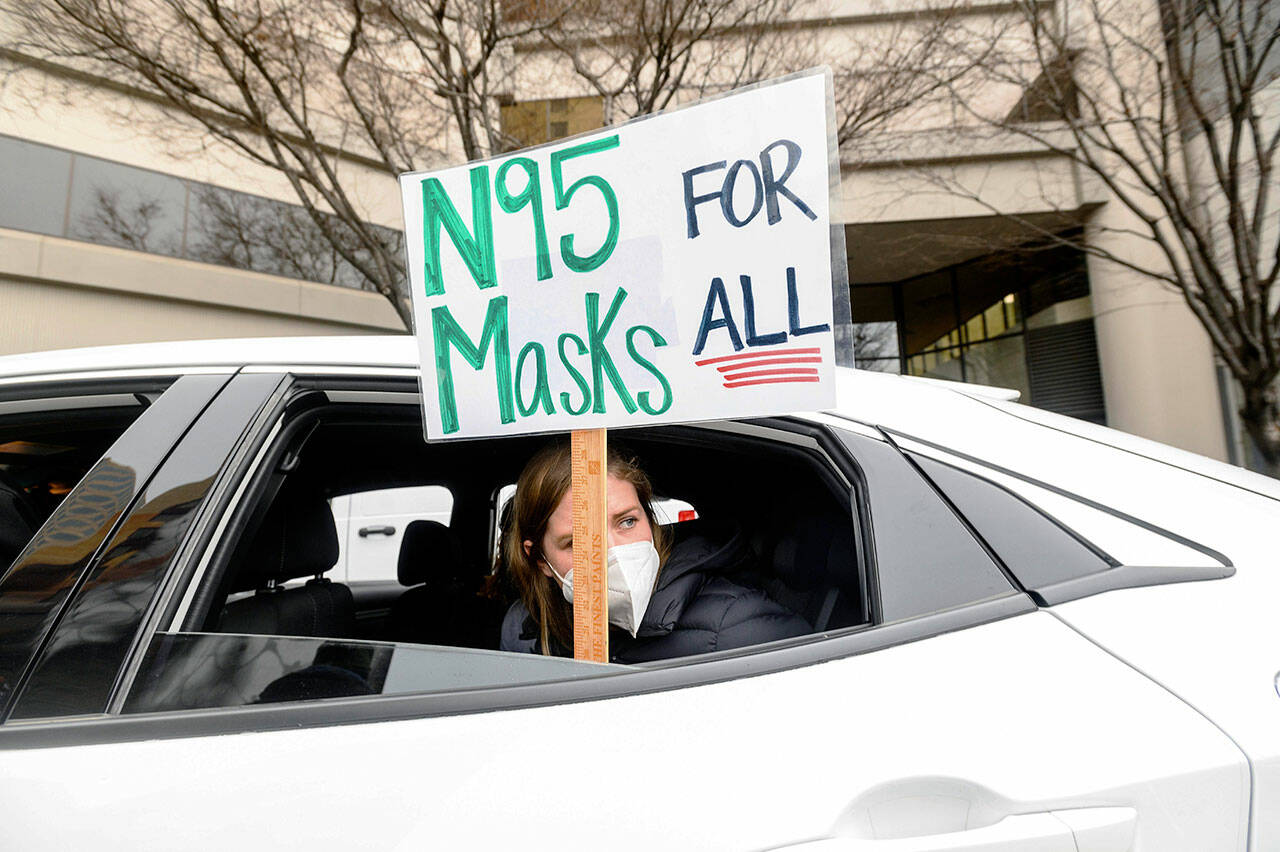By The Herald Editorial Board
Covid-19’s game of tag is well under way in Snohomish County, with the possibility that as many as half of us — whether unvaccinated or fully vaccinated and boosted, and regardless of past covid infections — face infection, thanks to the virus’ omicron variant.
Dr. Chris Spitters, Snohomish County health officer, Tuesday estimated that 8 percent to 10 percent of the county’s 840,000 residents have already contracted the virus in the past two weeks. And Spitters and Dr. Jay Cook, Providence Regional Medical Center Everett’s chief medical officer, predicted that omicron may soon infect one third to one half of the county’s population.
It would be a mistake, however, to look at such numbers with either resignation or nonchalance, even noting reports that omicron results in less serious health outcomes than previous variants, such as delta. Covid-19 remains a potentially serious and deadly disease, especially for those who are unvaccinated and those with compromised immune systems.
While the Centers for Disease Control and Prevention and other public health officials are likely to adjust broader guidance to match the challenges from each variant that comes along, what remains constant in slowing the spread of the disease and limiting serious illness, hospitalizations and death are the recommendations regarding vaccination, use of masks, testing, physical distance and proper hygiene.
What omicron appears to lack in virulence, it makes up for in ease of transmission. The number of hospitalizations at national, state and local levels speaks to how omicron is overwhelming medical resources.
In Snohomish County, 185 covid patients were hospitalized countywide as of Tuesday; 22 have been placed on ventilators. A month previous, the covid patient count for the county was 42.
While omicron has started to ease elsewhere in the world — often as quickly as it spiked to record infections — Washington state remains in the thick of the surge and its impact on health care resources. The worst of the impacts, even if they ease quickly early in February, as predicted by the University of Washington’s Institute for Health Metrics and Evaluation, show the forecasted need for hospital beds doubling from the current level before it begins to ease. The CDC’s aggregate of projections also show a similar doubling or new admissions in the state by early February.
And more than filling beds, the strain on hospitals and their staff has forced Providence’s Everett campus to limit visitors and suspend non-emergency — but still medically important — procedures for other patients since the start of the year.
Speaking to the importance of vaccination, that crush of covid patients is predominately among the unvaccinated. Of the patients in Providence Everett’s intensive care unit, 90 percent are unvaccinated, Cook reported. Similarly, in hard-hit New York state, vaccinated people are 90 percent to 95 percent less likely to require hospitalization.
To our credit, Washington state has reached a respectable level of vaccination. As of Jan. 10, 78 percent of state residents 5 years and older have received at least one dose of a covid vaccine, while 71 percent are fully vaccinated; among children 5 to 11, the vaccination rate is 29 percent with at least one dose and 21 percent fully vaccinated. Nationwide, 62 percent are fully vaccinated; and about 18 percent of children, 5 to 11 are vaccinated.
Not that the likelihood of a relatively mild or asymptomatic case of omicron for those who are vaccinated should cause them to let down their guard regarding use of masks. In fact, there are increasing calls for people to switch from the cloth masks that many use to more protective N95 masks and for the CDC to change its guidance and recommend N95 and KN95 styles of masks.
If cloth masks are all that’s handy, that’s the best mask to use. But cloth masks, which filter out 40 percent to 60 percent of virus particles, are less protective than N95s, which can block more than 95 percent of particles, according to a recent Washington Post commentary by physicians and infectious disease experts. The authors further argue that the masks, commonly used by medical professionals, are no longer in short supply as they were at the start of the pandemic, and new designs allow better breathability and comfort.
The CDC and other prominent health experts, including Dr. Anthony Fauci, have faced criticism for past guidance on masks, testing and isolation of those infected that can seem to change on a whim. But such guidance needs to be responsive to conditions that can change as quickly as covid, itself, adapts. Sensibly, the CDC is considering a change in guidance to recommend broader use of the N95 and KN95 masks.
At the same time, use of masks — any mask that is at hand — must be reinforced in our daily lives. Many of us will have noticed more people going unmasked while in indoor public spaces, specifically at grocery stores and other businesses. Those respecting the need for masks can respond in two ways when observing someone ignoring the mandate: Give the unmasked a wide berth and urge the store’s management to enforce the mandate as they are required by state and county health officials.
The hope is that in time, covid will get to the point where it becomes part of the disease background, like cold and flu viruses, present but kept at bay.
But a disease that has killed at least 861 in Snohomish county, more than 10,000 in Washington state, more than 842,000 in the United States and 5.5 million worldwide shouldn’t be underestimated.
Talk to us
> Give us your news tips.
> Send us a letter to the editor.
> More Herald contact information.

























